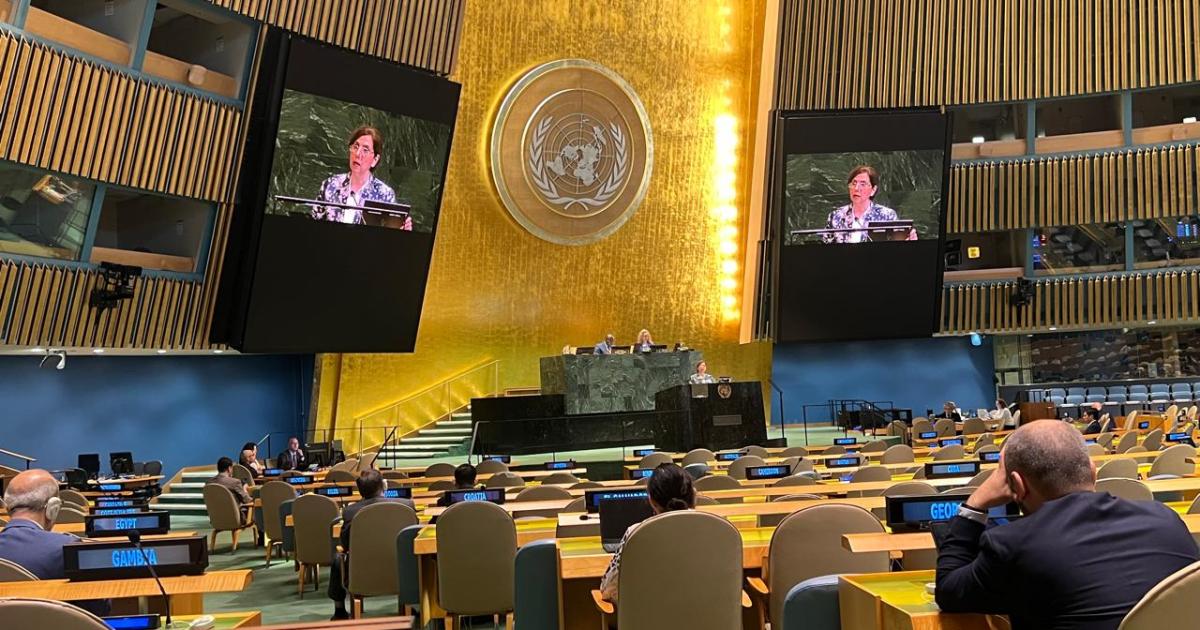
UN Hosts Meeting on Sand, Dust Storms Impact
New York-Beirut-Bangkok, 10 July 2025–The frequency, intensity and geographical reach of sand and dust storms (SDS) have grown at an alarming rate in recent years, affecting the lives of millions across the world. On Thursday, world leaders, UN officials, and stakeholders gathered in the General Assembly Hall at UN Headquarters for a high-level meeting on the SDS escalating threat, under the theme “Working Across Agendas for Resilience and Sustainability”.
Organized by the Presidency of the General Assembly with the support of the United Nations Coalition on Combating Sand and Dust Storms, co-chaired by the UN Economic and Social Commission for Western Asia (ESCWA) and the UN Economic and Social Commission for Asia and the Pacific (ESCAP), to commemorate the International Day on Combating Sand and Dust Storms, the meeting discussed challenges faced by affected countries and action-oriented recommendations, while seeking to promote practical, coordinated actions at the regional and global levels, and across global agendas related to climate change, desertification, disaster risk reduction, biodiversity, health and agriculture
“In the spirit of working across agendas for resilience and sustainability, we must move from fragmentation to synergy,” ESCWA Executive Secretary Rola Dashti said in her address, while urging to “strengthen commitments to combat SDS in global policy agendas, foster interregional and transboundary cooperation, enhance cross-sectoral resilience, and invest in innovative solutions and capacity building.” She underscored “That is why ESCWA launched an interregional dialogue series on fostering collaboration on SDS in partnership with ESCAP and the Government of Sweden”.
Referring to the theme of the high-level event, the ESCAP Executive Secretary Armida Salsiah Alisjahbana stated that “Working across agendas is not simply a thematic label-it is a strategic imperative. Therefore, the solutions we seek must also cut across silos, enabling better resource allocation, more effective mitigation strategies, and stronger alignment with the Sustainable Development Goals.”
Delegations representing member States, observer missions, UN agencies, accredited NGOs, and other partners participated in the session. This included statements delivered by members of the United Nations Coalition on Combating Sand and Dust Storms, including the FAO, IUCN, UNDRR, UNEP, UNU, WHO and the WMO.
Discussions focused on taking concrete actions to address the escalating threat, stressing the need to invest in science-based early warning systems and mitigation measures at the source and in impacted countries.
Recognizing the urgent need for a global response, the event also supports the United Nations Decade on Combating Sand and Dust Storms (2025-2034), which was proclaimed by United Nations General Assembly in July 2024 through resolution 78/314. The Decade aims to accelerate and sustain action towards the mobilization of means of implementation; scale up international cooperation and collaboration in science, research and innovation at the local, national and regional levels; and foster public-private and multi-stakeholder partnership. The United Nations Coalition on Combating Sand and Dust Storms is mandated to support the United Nations Secretary-General plan and organize the activities of the Decade,
https://www.unescwa.org/news/un-hosts-high-level-meeting-tackle-rising-impact-sand-and-dust-storms-%E2%80%9Cworking-across-agendas


